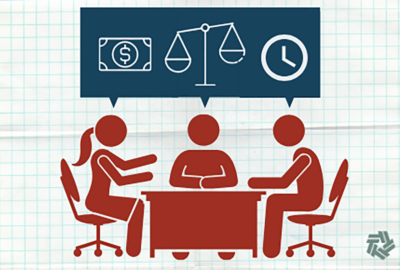People of the Earth: Prepare for reentry, or DaQuvalaHbe’chug blHoS
Will you return to your workplace of yore three, four or five days a week? Or will you permanently work from home all but one of two days a week/month? And how...
Editor’s Note: For relevant notes about the accuracy of digital Klingon language translators, please see today’s Nearly Useless Factoid.
(For the benefit of those whose Klingon Language skills have grown rusty, the remainder of this report will be in English. Thank you!)
If you miss watching Star Trek after school, or chugging into your federal office every day, cheer up.
A return to near normal (i.e. the old ways), if not total relief, is on the way.
Citizens of Planet Earth have seen incredible, if not unprecedented, changes in a matter of months, not centuries.
During this on-going post-(we hope) pandemic period, millions of people around the world, including about 80% of the American federal workforce, will be making a transition in process. Nobody saw it coming and now that it’s happened, nobody knows how it will play out. Will you return to your workplace of yore three, four or five days a week? Or will you permanently work from home all but one of two days a week/month? Is it possible that you could do your Manhattan- or LA-based federal job from a much less stressful, and costly, location. Like North Dakota?
While teleworking had been around for years, nobody saw it going to the place it is today. At least not in the federal government.
The first surprise — thanks to COVID-19 — is that millions of people, who had never dreamed they could work from home or a remote site have been doing it for the past couple of years. To the point where it is the new normal.
Back in the day (2019), the concept of not going into the office, of abandoning your car pool or commute to work from home, was a fading dream. For a variety of reasons, the Trump administration was rolling back the mostly anemic federal teleworking effort. At both the Interior and Agriculture Departments, political appointees were working to dismantle teleworking deals that had been worked out with the union. Part of it was designed simply to whack the unions (who supported Hillary Clinton). Part may have been a genuine feeling that work should be done in the workplace, especially when face-to-face encounters with taxpayers/customers was part of the deal. Now, for better or worse, the Office of Personnel Management estimates that as many as 90% of workers in some agencies and locations are, or were until recently, working from home. The change to teleworking and back again has rattled lots of folks. Bringing people back to the office is part of the Post Hybrid Work Environmental Guidelines.
Customer-oriented agencies, like the Social Security Administration and the Internal Revenue Service are planning on bringing many, if not most, teleworkers back to the office. Agencies that once hired people are now “onboarding” them. If you are not familiar with the term, the translation to Klingon is wa’go’Dag.
Bottom line: Some — maybe many, maybe most — of you are about to undergo what the government is calling the “reentry” process or phase. AKA: Back to the office. Starting today, Social Security plans to return to dealing with customers who do not have appointments, although it still recommends them. The Internal Revenue Service this week (April 9) also hopes that taxpayers in many parts of the country will be able to have walk-in appointments. But it still recommends you call ahead.
In some agencies, it is possible that many employees working from home or remote sites will not have to undergo the reentry process. Or if they do, they will work between two worlds: the home office and the office-office. They are also watching the private sector where in some places, workers are telling their bosses they want to keep working, but not from their old (pre-pandemic) offices.
Meantime, unions which represent more than twice as many workers as they have actual members are hoping to get creative during reentry. As part of its economic incentive program, the White House has made it clear it wants as many feds as possible returned to their offices to give customers more face-time, and give local merchants customers they’ve missed over the past couple of years. This is a big economic deal not just in the metro Washington area, but in other places — Ogden, Utah, Huntsville, Alabama, and San Antonio, Texas — where Uncle Sam is a major, if not the major, employer/customer. So what’s the next step? What are your hopes/plans? It would be fascinating to hear what you feel about the “reentry’ process (mcausey@federalnewsnetwork.com).
Final thought: ghor ghu’meydaj ghor. vaj taghDl’ go’ DarurchoH. For an English translation, click here; https://www.translate.com/english-klingon
And it goes without saying but, QaQja jjajllj.
Nearly Useless Factoid
The only parallel texts (texts written in both languages) that exist in Klingon are Hamlet and Much Ado About Nothing, both of which contain a significant amount of interpretation from the translators. This lack of accurate parallel texts leads to major inaccuracies in “translations” from digital Klingon translators, which require a substantial body of work for their algorithms to understand contextual meaning, among other nuances of language.
Source: Klingon.wiki
Copyright © 2025 Federal News Network. All rights reserved. This website is not intended for users located within the European Economic Area.
Mike Causey is senior correspondent for Federal News Network and writes his daily Federal Report column on federal employees’ pay, benefits and retirement.
Follow @mcauseyWFED





